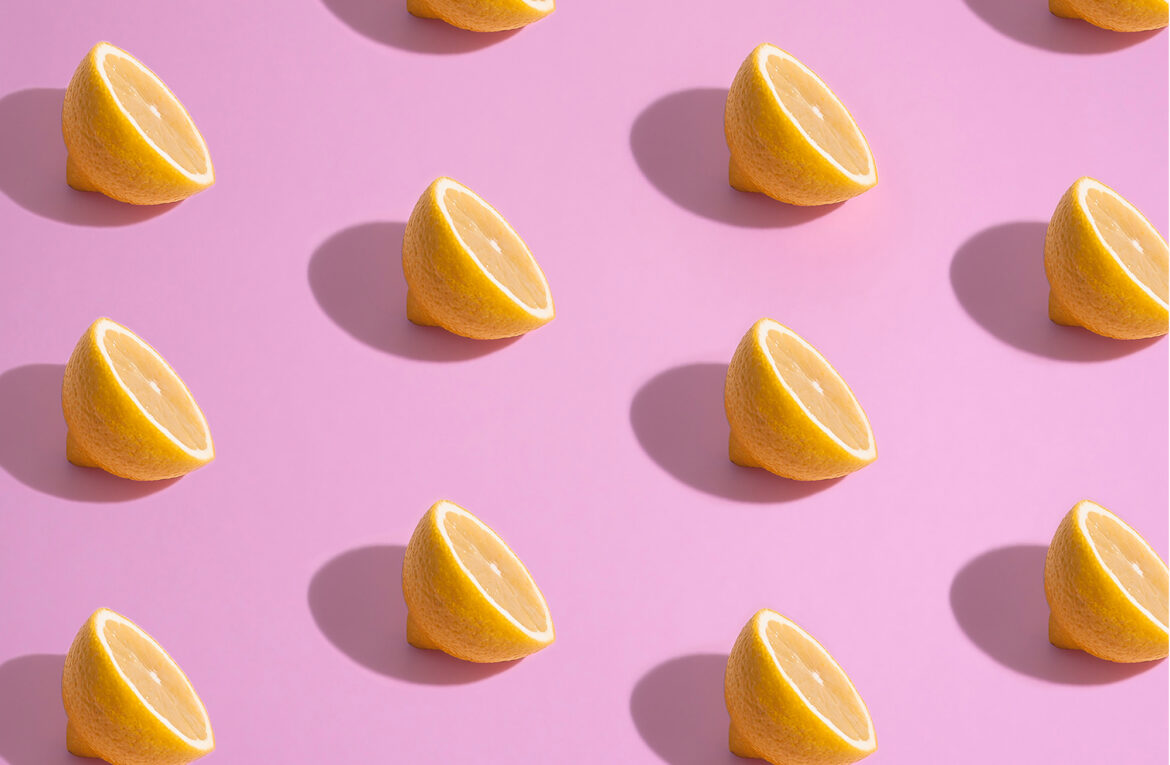Our Winter 2021/22 issue has gone to print. In this issue Hans Wieland shares how we can learn from lemons– dive on in for a sneak peek!
Learning From Lemons
The Seasonality Of Citrus Fruits
by Hans Wieland
Lemons are a flavour catalyst
For many of us, lemons are synonymous with sour, because besides loads of Vitamin C, the juicy flesh of the fruits contains up to 8% citric acid. After salt and pepper, lemons are the most commonly used flavouring ingredient in the Wieland kitchen; used in everything from baking to meat, fish and vegetable cookery. Lemon is said to be a flavour catalyst, meaning that it interacts with the taste buds so that the flavours that follow are more pronounced. One of my Italian friends says: “For 200 years at least, the unique, earthy and aromatic taste of sour lemon juice has been as essential to an Italian banquet as ketchup is to fast food.” The preserved lemons from northern Africa and India have recently become more widely appreciated as a condiment and many chefs love them. The fermentation process changes their aroma from bright and sharp to rich and rounded. They add an intense, concentrated lemon flavour to the dish without all the sour tartness. We always have one or two big jars in our larder.
Lemon varieties
When it comes to lemons (and other citrus fruits) we are very uneducated about varieties and seasonality. This probably stems from the fact that lemons are available all year round and for the …exporting countries and their big producers, lemons are a commodity rather than a culinary produce. The world’s main producing country is Mexico, followed by India, whereas Spain is the number one exporting country of lemons. Although Spain and Italy produce nearly the same amount of lemons, Spain exports more than 70 %. The peak of production for most varieties is in the Winter months and early Spring. However, the Eureka grows year-round and abundantly, and is mostly grown in Asia and South America. This is the common supermarket lemon, also known as ‘Four Seasons’, because of its ability to produce fruit and flowers together throughout the year. The Lisbon is the other common supermarket lemon. It is smoother than the Eureka, has thinner skin and fewer or no seeds and produces more juice than the Eureka. Meyer lemons are a hybrid variety with sweeter juice, picked mainly from November to March. The most important varieties cultivated in Spain are Verna and Fino, also the Eureka. The Femminello St. Teresa, or Sorrento, is native to Italy. This fruit’s zest is high in lemon oils. It is the variety traditionally used in the making of limoncello.
“Lemon is said to be a flavour catalyst… it interacts with the taste buds so that the flavours that follow are more pronounced.”
Can we grow our own lemons?
Lemon trees not only like a high intensity of light, they want to be caressed by the sun, which is a challenge even in the best of Irish summers. They thrive in temperatures of 20-30° Celsius, are an evergreen, and tolerate temperatures down to zero in the Winter. That means growing lemons in Ireland can only be done with the protection of a greenhouse or conservatory, and you will have a lesser yield. These lemon trees are best grown in pots, with the advantage that they can be moved around if necessary. After flowering, the fruits take a year to develop and you often see fruits and flowers on the tree at the same time.
Neantóg Lemons
A lemon tree gifted to me as a Christmas present by my wife Gaby was the start of my own lemon growing experience here at Neantóg farm. It was a three year old potted tree, aabout a foot in height with a few lemons on it, and looked very healthy, with lush green leaves. I was very excited about growing my own lemons, but also a bit sceptical. Would it really work? I positioned it in the SW corner of our conservatory and planted into a big 30 litre pot in the Summer. The tree has thrived ever since, and has now grown to about five feet, often yielding up to 30 lemons a year. We usually start harvesting after Christmas when the lemons have turned from green to yellow, due to a drop of temperature below 15 degrees C.
Buy Citrus fruits direct from the farm– Crowdfarming
I can still remember the excitement when I was a child and we got our first oranges for Christmas. Now that most foods are available at any time of year, it is difficult to recall the excitement the beginning of a new season used to generate. Last year, for the first time, we bought lemons and oranges direct from the farm via the Crowdfarming website. This is an initiative where you can buy products directly from European farmers. This project is aims to provide a fairer revenue for farmers, to reduce environmental impact and to eliminate waste in the supply chain. Most if not all farms working with Crowdfarming are organic or biodynamic farms, or in conversion to organic farming owned by families. You can read their story, see which variety they grow, and pick the date of shipping, which means your lemons, oranges or mandarins are picked the day before shipping. When we opened our first box the scent was overwhelming and it almost felt like Christmas when we were little.
Hans Wieland works and teaches at Neantog Kitchen Garden School in Cliffony, Co.Sligo.
Find out more about Hans here: neantog.com


